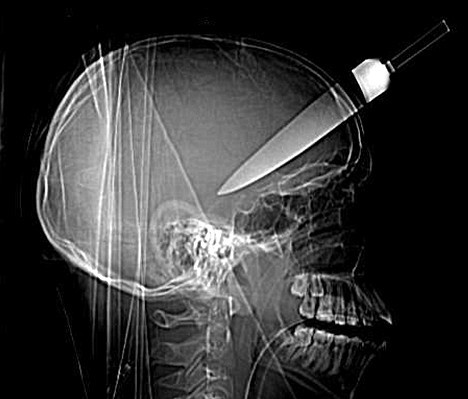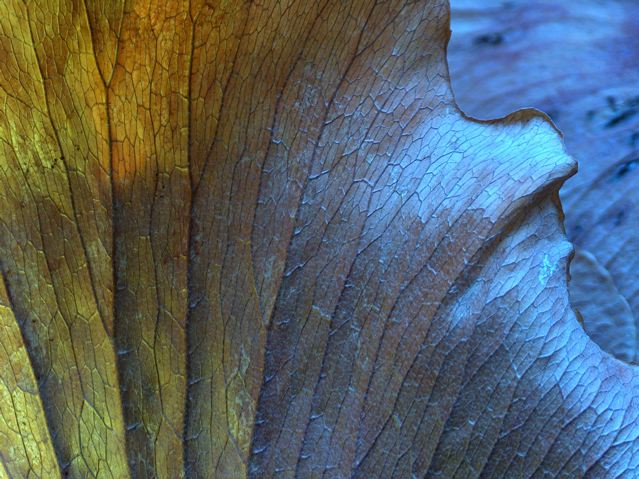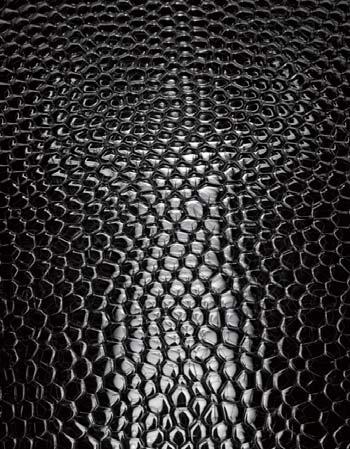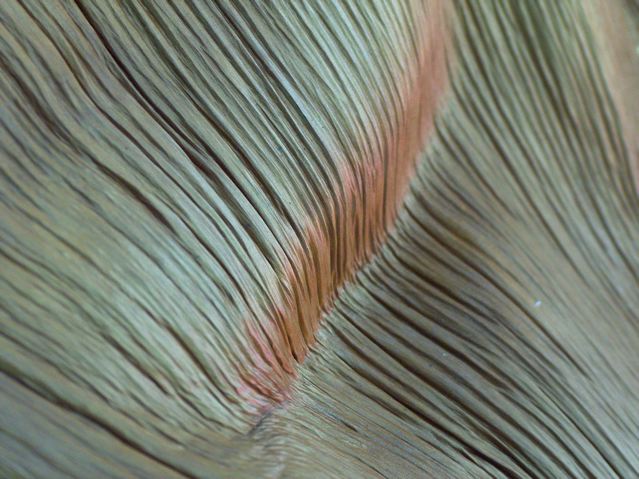Spooky Action
January 26th, 2010Full-body scans became all the rage about a decade ago as a means for early detection of cancer and other illness. Who wouldn’t want to make this investment in their health? Me, for one. There is a principle in physics that the act of observing an object or event affects it, and the more closely or accurately it is observed, the more it is affected. This is called the “observer effect.” Think about it. What kid doesn’t play soccer differently if her parents are watching? Or ever notice how hard it is to show off your typing skills with someone looking over your shoulder?
 Now let’s zoom in a bit. When I was a kid our local shoe store had an X-ray machine used to measure our feet. These days we are draped with lead bibs for a single quick dental X-ray, because we know that X-rays can cause cancer, but back then we X-rayed our feet over and over for fun! When we are X-rayed, our bodies are bombarded with electromagnetic radiation to produce an image. Cancer is a risk because our skin, bones, and cells are altered by the particles bouncing off or passing through them. Altered by the act of observing them. To get the more comprehensive and detailed images produced by the full-body scans the body is observed more closely by the instrumentation. According to one source these scans, “expose people to about 13 milligrays of radiation, which is about the same exposure suffered by people who were 1½ miles from the center of the World War II atomic blasts in Japan,” and even one scan increases the subject’s lifetime cancer risk by 1%. So maybe you weren’t going to get cancer until you got the scan to detect it.
Now let’s zoom in a bit. When I was a kid our local shoe store had an X-ray machine used to measure our feet. These days we are draped with lead bibs for a single quick dental X-ray, because we know that X-rays can cause cancer, but back then we X-rayed our feet over and over for fun! When we are X-rayed, our bodies are bombarded with electromagnetic radiation to produce an image. Cancer is a risk because our skin, bones, and cells are altered by the particles bouncing off or passing through them. Altered by the act of observing them. To get the more comprehensive and detailed images produced by the full-body scans the body is observed more closely by the instrumentation. According to one source these scans, “expose people to about 13 milligrays of radiation, which is about the same exposure suffered by people who were 1½ miles from the center of the World War II atomic blasts in Japan,” and even one scan increases the subject’s lifetime cancer risk by 1%. So maybe you weren’t going to get cancer until you got the scan to detect it.
Nurse: Congratulations, Mr. Jones, you do not have herpes.
Mr. Jones: Thank you! [Kisses nurse on lips]
Nurse: Well, now you do.– Second City Television skit
At first I thought that the observer effect must have something to do with quantum mechanics and Schrödinger’s cat, the theoretical felicidal contraption involving Verschränkung–“entanglement”–or as Einstein teased, spukhafte Fernwirkung: “Spooky action at a distance.” But basta with (alive and/or) dead cats, right? This effect lies in the realm of good old Newtonian physics. When you take your child’s temperature, some of his body heat is transferred to the thermometer to raise the mercury, lowering his body temperature by that amount. For all intents and purposes it is imperceptible, but it is quantifiable. Similarly, using electronics to measure voltage places a (small) load on the circuit, thereby affecting the current.
Hellooooo? Is this an Arts blog or what?!? Right. Sorry. Thank you.
For the past few months my photos have been hanging at EyeWise Optometry. As I wrote in “Pretty Pictures” they hosted a reception for me on December 11, attended by friends, family, and a throng of adoring fans. Just kidding. To my delight an artist whose work I had reviewed previously but never met also attended. I had seen Mercy Calman’s work in the “Still (In) Motion” show at Frisbie St. in November 2009.

“Staghorn Fern,” Mercy Calman
Mercy and I got to talking about her process. Although she shoots digital and her photos have a distinctly tweaked appearance, there is no post-processing. Like Brian Oglesbee, who could have created his Water Series so much more easily using PhotoShop–rather than submerging his model in a giant tank beneath meticulously handcrafted soap bubbles–Mercy creates all “effects” under natural, ambient lighting at the time the photo is shot: She dips her finger in water to create a ripple. She holds up a brightly colored sheet to alter the hue. Calman came upon this process by accident, noticing the unexpected color in her photographs of flowers and realizing that it had been influenced by the bright clothing she was wearing when she took the shot. Hmmm…. I’m usually clad in black. Maybe that’s why so many of my photos turn out too dark?

“Water Series 41,” Brian Oglesbee
There are other observer effects in photography. I mentioned in “Michael Wolf’s Penetrating Lens” that photographers encounter situations where if they stop to ask permission before taking a photo the scene they wanted to capture is ruined. It’s like looking at posed photos from family reunions where everyone is “acting natural.” When exactly were we all standing together like that facing the same direction?
This aspect of the observer effect has even been captured in painting. In Johannes Vermeer’s oil painting “Girl Interrupted at her Music” (1660-61), the subject appears to have been interrupted by the artist, and captured at that moment. But of course there is no such spontaneity in this painting, which was not created in an instant like a modern photograph but built up over several months. To be honest, I probably wouldn’t have thought of the Vermeer if not for the recent death of Britanny Murphy, who played the role of Daisy in “Girl, Interrupted.” But it is an ingenious affectation, and a rare nod to the impact the painter has on his or her subject.

“Grass Reflection,” Mercy Calman
We observe everything from colliding subatomic particles to our children at play, the flowers in our gardens to dark matter in space. Sometimes this benefits them. Sometimes it interrupts, distracts, perhaps even shortens their lives. Sometimes, whether we intend to or not, it beautifies them. Mercy Calman’s photos exhibit next in “Illuminating Shadows – Art Show in the Dark” at Frisbie St., January 29-31 only. So go observe.
Michael Singman-Aste
Postdiluvian Photo
Tags: Brittany Murphy, Frisbie St., Mercy Calman, physics



Another interesting blog, albeit sometimes difficult to read and/or understand. I have never used the word “albeit” in my life. Hope I used it properly this time. You are an extremely articulate and/or great writer, speaking from a Mother’s viewpoint, unbiased though it is.
[…] now, check out this great post on Postdiluvian by Michael Singman-Aste about Mercedes Calman. You’ll see her work at the show this […]
Nice post. Excellent observations on observing and observations. Nearly metacognitive. Excellent artwork too!